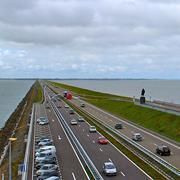Dutch Scheme Funding Declines During Second Quarter

The financial position of Dutch pension funds deteriorated in the second quarter, according to the country’s regulator De Nederlandsche Bank (DNB).
Combined liabilities across the country’s 229 schemes rose by €96bn to €1,463bn, which DNB said was largely down to declining interest rates – the main criterion for discounting liabilities.
Based on reporting by Dutch pension schemes, the supervisor said that combined assets rose by €55bn to €1,488bn.
Since March, the proportion of pension rights managed by pension funds with a funding level below 104.2% has increased from 56% to 60%.
Until recently, 104.2% was the minimum required funding level. Pension funds with a shortfall for a continuous period of five years had to cut benefits.
However, as part of the pensions agreement struck between the social partners and the cabinet in June, the government decided to temporarily lower the minimum required funding level to 100%, in order to reduce the chance of cuts.
DNB said that pension funds’ coverage ratio dropped by 1.3 percentage point to 106% on average in the second quarter of 2019.
The funding level of 51 schemes fell short of 104.2%, while 53 pension funds – representing 20% of all pension entitlements – were more than 104.2% funded.
110 pension funds had a funding level exceeding 110%, which would allow them to grant at least partial inflation compensation. Full indexation is allowed only when a scheme reaches a coverage ratio of more than 125%.
Despite the government lowering the minimum required funding level to 100%, many of the Dutch pension funds – including four of the five largest – face imminent benefit cuts following the introduction of lower assumptions for future returns.
As a consequence, pension funds’ “critical funding level” is to increase. Schemes with a shortfall relative to this critical coverage level must cut pension rights immediately.
This has put the €442bn civil service scheme and the €217bn healthcare scheme PFZW in the danger zone. Under the old rules, their funding level at the end of 2020 would have been the criterion for rights discounts in 2021.
The large metal industry schemes PMT (€77bn) and PME (€50bn) still facing cuts in 2020, as their funding ratio at the end of the second quarter was below 100%.
EU Negotiators Agree On Sustainability Taxonomy, Approval Still Needed
Efama calls for action on corporate reporting given investor disclosure requirements Read more
Large Dutch Metal Schemes Keep Premium, Accrual Unchanged In 2020
PMT and PME announce significant contribution rise for 2021 Read more
AP1 Hit By New Rules Breach As Head Of Equities Agrees To Quit
Swedish national pension fund says Olof Jonasson bought into firms AP1 later invested in Read more
IPE Conference: Pension Funds Find Changing Public Opinion Is Part Of A PE Investors Role
“Locusts” perception of private equity poses challenges for would-be investors Read more
IPE Conference: Long-term Horizon Hailed As Key To Improved Investment Approach
‘The biggest risk is that you will not achieve any returns in the coming decades,’ says Jaap van Dam, 300 Club Read more
UK Roundup: TPR Debt Recovery Rate Low, £40m Missed
KPMG sells UK pensions practice Read more

